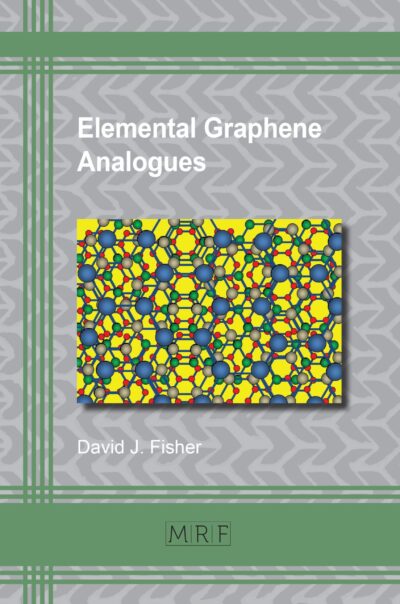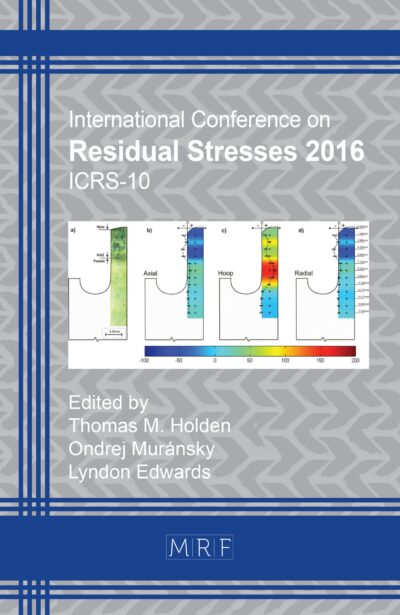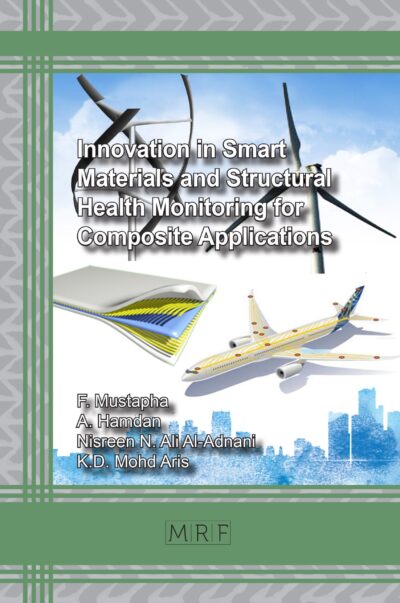3D Concrete Printing Technology
Configuration with Green and Self-Healing Concrete
Tejwant Singh Brar, Mohammad Arif Kamal, Shubham Singh
Materials Research Foundations Vol. 134
Publication Date 2022, 94 Pages
Print ISBN 978-1-64490-214-1 (release date November 2022)
ePDF ISBN 978-1-64490-215-8
DOI: 10.21741/9781644902158
The book presents a detailed comparison between traditional construction techniques and 3D printing construction. The comparison focuses on four primary parameters: mechanism, composition, time and cost. The operational details of each technology (cast-in situ, pre-stress, post-tension) are reviewed and comparison criteria for all techniques are formulated. In conclusion, 3D printing seems to be well on its way to transform the whole construction industry.
Keywords
3D Concrete Printing, Cast-in-Situ Technology, Pre-Cast Technology, Pre-Stressed Technology, Post-Tension Technology, 3D-Printable Materials, Extrudability, Buildability, Workability, Open Time, Contact Strength between Layers, Aggregates, Water-Cement Ratio, Rheological and Mechanical Properties of 3D Printable Materials, Reinforcement Strategies, Printability Window, Cost Analysis, Green Concrete, Self-Healing Concrete
Table of Contents
Preface
Introduction 1
1. Introduction 1
2. Justification and Need for the Study 3
3. Objectives of the Study 4
4. Scope and Limitations 4
5. Research Methodology 5
6. The Expected Outcomes 5
Conventional Construction Technology 7
1. Introduction 7
2. Evolution of Construction Technology 7
3. Cast-in-Situ Construction Technology 8
3.1 Composition/Mix Design in Cast-in-Situ Construction 9
3.1.1 Cement, Sand and Coarse Aggregate Requirement for M20 Grade Concrete 9
3.1.2 Weight of Cement Required for 1 Cubic Meter of M20 Grade Concrete 10
3.1.3 Volume of Sand and Aggregate Required for 1 Cubic Meter of M20 Grade Concrete 10
3.1.4 Volume of Sand and Aggregate Required for 1 Cubic Meter of M20 Grade Concrete 10
3.2 Cost Analysis of Cast-in-Situ Construction 11
3.3 Rate Analysis for 1 cum Concrete of M20 (1:1.5:3) 11
4. Pre-Cast Construction Technology 12
4.1 Types of Precast Elements 12
4.2 Machinery Used in Pre-Cast Technology 13
4.2.1 Hollow Core Slab Production 13
4.2.2 Production of Wall, Beam and Column 14
4.2.3 Concrete Distribution 14
4.2.4 Batching Plant 14
4.2.5 Other Miscellaneous Machinery 14
4.2.6 Transportation and lifting Machinery 14
4.2.7 Q.C. Machinery and Apparatuses 15
4.3 Composition/Mix Design in Precast construction 15
4.3.1 Cement Required for M25 Grade (in Cubic Meter) 15
4.3.2 Cement Required for M25 Grade (in Kg) 15
4.3.3 Cement Bags Required for M25 Grade 15
4.3.4 Sand Required for M25 Grade (in Cubic Meters) 15
4.3.5 Sand Required for M25 Grade (in Kg) 16
4.3.6 Sand Required for M25 Grade (in cft) 16
4.3.7 Aggregate Required for M25 Grade (in Cubic Meter) 16
4.3.8 Aggregate Required for M25 Grade (in Kg) 16
4.3.9 Aggregate Required for M25 Grade (in cft) 16
4.4 Cost Analysis of Precast Construction (Case Study) 17
5. Pre-Stressed Technology 19
5.1 Composition/Mix Design in Pre-Stressed Construction 19
5.2 Cost Analysis of Pre-Stressed Construction 19
6. Post-Tension Technology 19
6.1 Composition/Mix Design in Post-Tension Construction 20
6.2 Cost Analysis of Post-Tension Construction 21
7. Conclusions 21
3-D Concrete Printing Technology 22
1. Introduction 22
2. Classification Based on Material 23
3. Classification Based on Technique 24
3.1 Extrusion-Based Technique 24
3.1.1 Contour Crafting 24
3.1.2 Concrete Printing 25
3.1.3 CONPrint3D: Concrete On-Site 3D Printing 26
3.2 Powder-Based Technique 27
3.2.1 D-shape 27
3.2.2 Emerging Objects 27
3.2.3 Powder Based 3D Concrete Printing Using Geopolymer 28
4. Mechanism of 3D Concrete Printing System 29
5. Composition/Mix Design of 3D Concrete Printing 31
5.1 3D-Printable Material Requirements 31
5.2 Material Composition 31
6. Requirements of Concrete for 3D Printing 34
6.1 Extrudability 34
6.2 Buildability 35
6.3 Workability 35
6.4 Open Time 35
6.5 Contact Strength between Layers 36
6.7 Aggregates 36
6.8 Water Cement Ratio 36
6. Challenges for 3D Printable Material in Large
Scale Construction 37
7. Advantages of 3D Concrete Printing 38
8. Disadvantages of 3D Concrete Printing 39
9. Conclusions 40
Properties and Cost Analysis of 3D Concrete Printing 41
1. Introduction 41
2. Rheological Properties of 3D printable materials 41
2.1 Pumpability of concrete 41
2.2 Extrudability of concrete 42
2.3 Buildability of concrete 42
3. Mechanical properties of 3D printed vs casted steel fiber reinforced concrete 43
4. Types of Reinforcement Strategies for 3D Concrete Printing 44
4.1 Cable Introduction at the Nozzle 44
4.2 Insertion of Reinforcing Elements into the Printed Concrete 44
4.3 Mesh Reinforcement 44
4.4 Printing over Conventional Bars 45
4.5 Use of Printed Reinforcement 45
4.6 Fiber-Reinforced Printable Concrete Mix 45
4.7 Post-Printed Reinforcement Strategies 46
5. Printability Window 46
6. Cost Analysis of 3D Concrete Printing 47
6.1 Parameter Selection and Strength Requirements of Geopolymer Printable Concrete 48
6.2 Analysis of 3D Concrete Printing Cost Using a Case Study 49
Green Concrete 52
1. Introduction 52
2. Composition of Green Concrete 53
2.1 Blast Furnace Slag 53
2.2 Fly Ash 54
2.3 Silica Fume 54
2.4 Recycled Glass 54
2.5 Date Palm Ash 54
3. Cost Analysis of Green concrete and Conventional Concrete 58
3.1 Cost Analysis of Green Concrete with Fly Ash and Bottom Fly Ash with the Cement of 333 kg/m3 58
3.2 Cost Analysis of Green Concrete with Fly Ash, Bottom Ash and Fly Ash Aggregate with a Cement Content of
389 kg/m3 60
4. Conclusions 61
Self-Healing Concrete 62
1. Introduction 62
2. Process Involved in Self-Healing Concrete 62
2.1 The Natural Process 63
2.2 The Chemical Self-Healing Process 64
2.3 The Biological Self-Healing Process 64
3. Classification of Self-Healing Concrete 65
3.1 Autogenous Self-Healing Concrete 65
3.2 Autonomous Self-Healing Concrete 65
4. The Environmental Impact of Self-Healing Concrete 66
5. Composition / Mix Design of Self-Healing Concrete 66
6. Mechanism of Self-Healing Concrete 67
7. Properties and Experimental Results 68
7.1 Compressive Strength 68
7.2 Water Absorption 69
7.3 Water Permeability 69
7.4 Other Experimentation Results 69
8. Factors Affecting Self-Healing Concrete 72
8.1 Moisture Content 72
8.2 Crack Width 72
8.3 Time for Hydration 72
8.4 Pressure Applied to Cracks 72
8.5 Water-Cement Ratio 72
9. Advantages of Self-Healing Concrete 72
10. Disadvantages of Self-Healing Concrete 73
11. Cost Analysis of Self-Healing Concrete and
Conventional Concrete 73
12. Conclusions 74
Conclusions 75
1. Introduction 75
2. Combining 3D-Printing Technology with Green and
Self-Healing Concrete 75
3. Opportunities and Future Implications 76
Bibliography 78
About the Authors 85














